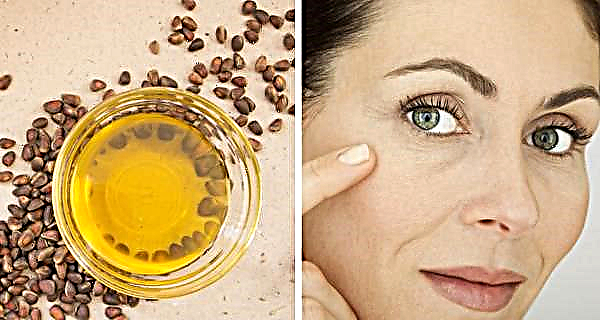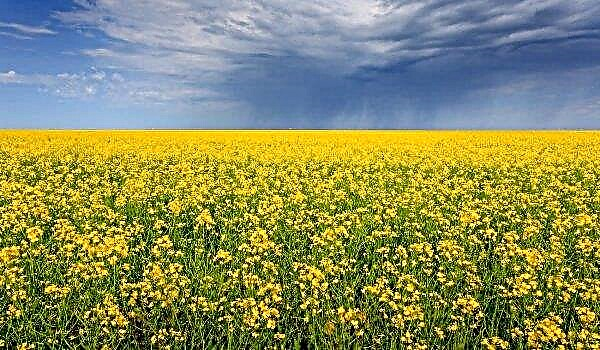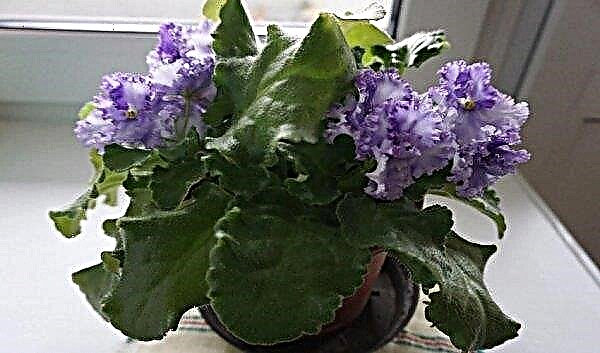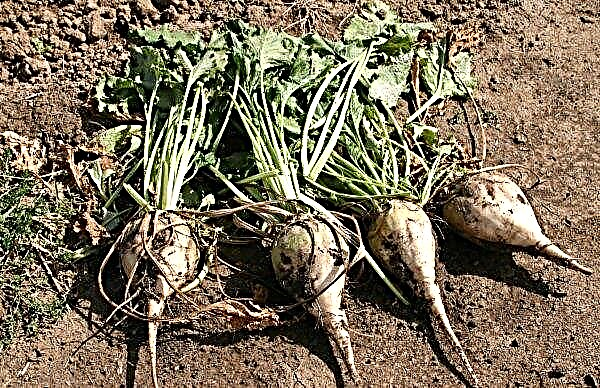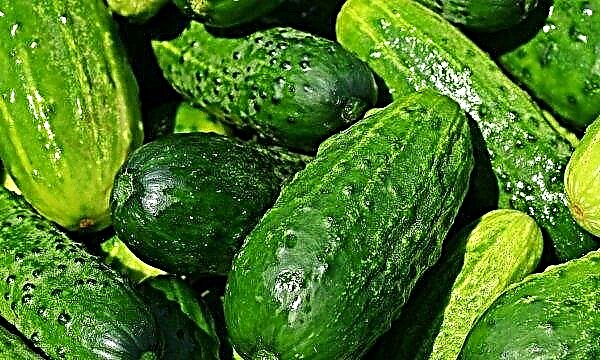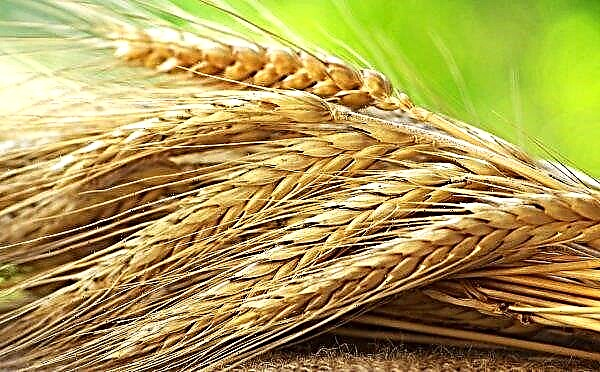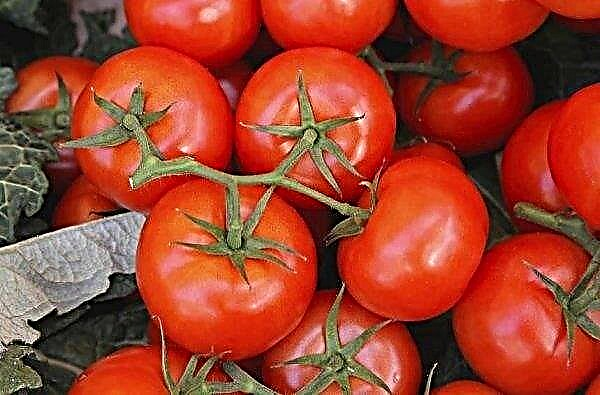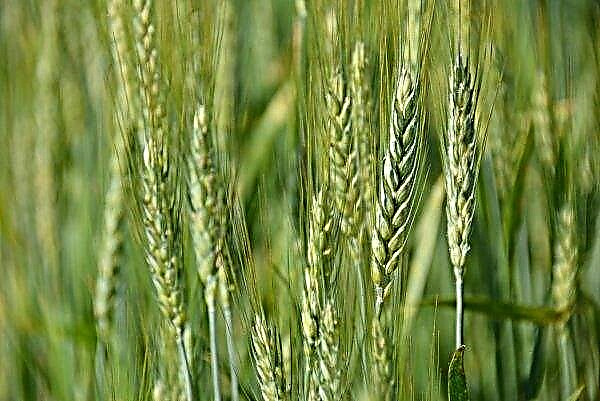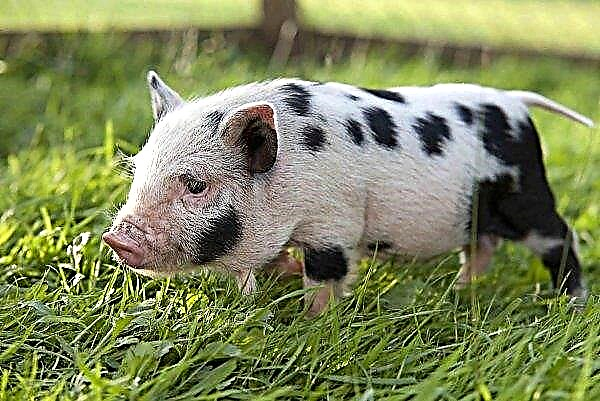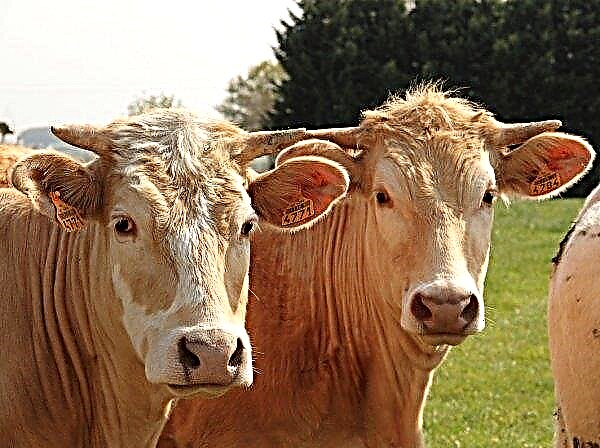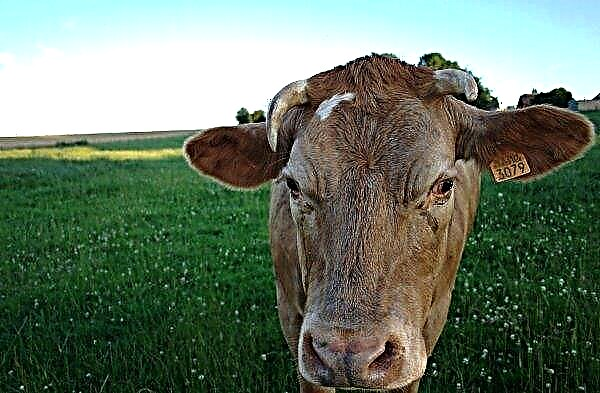Growing cucumbers in a greenhouse, each gardener hopes to get a generous crop of delicious and crisp fruits, but sometimes the plants suddenly start to dry out and the plantings die. In such a situation, it is necessary to analyze all the possible factors affecting the growth of bushes in order to quickly find a solution to the problem and save the crop. In this article, we will talk about the main reasons that provoke the drying of cucumbers, as well as what to do to the gardener to combat this phenomenon.
Reasons why cucumbers dry in a greenhouse
When growing cucumbers in closed ground, it is necessary to take into account all the requirements of this culture for microclimate conditions and care. Bushes need proper watering, regular top dressing and protection from sudden changes in temperature.  If you violate the basic rules of care, cucumbers can turn yellow and dry. It is equally important to monitor the general condition of the plants themselves and in time to detect signs of planting damage by diseases and pests. Read more about why cucumbers sometimes dry in the greenhouse - later in the article.
If you violate the basic rules of care, cucumbers can turn yellow and dry. It is equally important to monitor the general condition of the plants themselves and in time to detect signs of planting damage by diseases and pests. Read more about why cucumbers sometimes dry in the greenhouse - later in the article.
Did you know? The word "cucumber" in translation from ancient Greek means "not ripe, not ripened".
Diseases and Pests
Sometimes the cause of drying of cucumbers in the greenhouse are diseases and pests of this crop. Most often, they arise as a result of improper care of the bushes and quickly spread to all beds, so the gardener needs to know the main signs of infection and immediately begin to deal with the difficulties encountered.
Such infections and insects can cause cucumbers to dry in the greenhouse:
- Powdery mildew. This disease has a fungal nature, and its main symptom is small spots on the leaves, covered with white coating. Over time, the affected areas increase in size and cover the entire plant, disrupting the process of photosynthesis. As a result, the leaves of the cucumbers turn yellow and dry, and the bush dies. The reason for the appearance of powdery mildew is a sharp cooling and watering with cold water.

- Fusarium leaf wilting. The causative agent of infection is also a fungus that penetrates the capillaries of the bush and interferes with the normal nutrition of the plant. As a result, cucumbers do not receive the nutrients they need, the bush slows down its growth, and its top wilts, turns yellow and dries. The next stage in the development of the disease is the decay of the basal part of the stem and the roots themselves. The reason for the appearance of fusarium is an excessive amount of organic fertilizers in the soil and the presence of weeds.

- Root rot. At the initial stage, the stem of the bush is covered with a brown coating, and its growth slows down. Further, the infection affects the underground part of the plants, causing rotting and cracking of their roots. Through damaged roots, the bush cannot absorb moisture and fertilizers from the soil, so the leaves of cucumbers begin to turn yellow and dry. This disease appears in the greenhouse when there is a violation of irrigation rules or an excess of nitrogen fertilizers, as well as when plants are planted in infected or too cold soil.
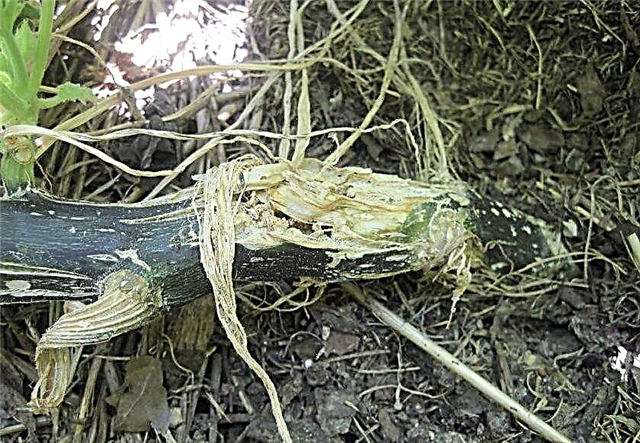
- Peronosporosis (downy mildew). The first sign of the disease is small yellowish spots on the outside of the leaves, and their lower part is covered with a whitish coating. The affected leaf takes on a burned appearance, begins to dry out and soon falls off. The causes of infection in the greenhouse are watering with cold water and a sharp decrease in air temperature, as well as increased humidity in the greenhouse.

- Gourd aphids. These insects have a green body and small size. Pests and their larvae live on the lower surface of leaves, and you can notice them by the appearance of small yellow spots, which eventually acquire a saturated green color. Damaged leaves begin to turn yellow and dry, and with a strong infection, the plant may even die. Insects often live on weeds, and then move to cucumber bushes.

- Spider mite. The pest is small and lives on the underside of the leaf, feeding on its juice. In the infected areas, you can notice a thin white web, which eventually spreads to the entire plant. The surface of the sheet is covered with small dots, resembling punctures from a needle. Over time, these areas begin to turn yellow, and the leaf dries. The pest breeds well in greenhouses with elevated air temperatures and can winter in the crevices of the structure.

Cultural Violations
Cucumbers in the greenhouse can also dry out when improperly maintained or if the microclimate in the building is violated. Therefore, when this problem occurs, the gardener needs to first of all analyze his actions and recall the possible mistakes made during the cultivation of the crop.
Important! During a decrease in air temperature in the greenhouse to +13°With the development of cucumbers it stops, and when frost sets in, bushes die.
- The most common causes of cucumber drying in the greenhouse associated with a violation of the rules for caring for the bushes are listed below:
- irrigation of beds with cold water - causes a sharp temperature drop in the soil, which affects the roots of the plant and can cause diseases;
- excessive watering of beds - leads to a strong soaking of the soil, leaches all nutrients from it and causes the appearance of diseases, as a result of which the bush dries up;
- lack of moisture in the soil and irregular irrigation of plants - while the bushes do not have forces for active growth, so the leaves quickly dry up and curl into tubules;
- watering cucumbers in the daytime - drops of water fall on the leaves of plants and, under the influence of bright sunlight, cause sunburn on them;
- thickened plantings - if the cucumbers are planted too close to each other, then they will not have enough moisture, sunlight and fertilizers from the soil, so the bushes will begin to dry out;
- untimely collection of fruits - ripe specimens draw water and nutrients from the plant, which causes leaves and young ovaries to suffer;
- lack of nitrogen during the period of active growth of green mass - this component is the main catalyst for leaf growth, so when it is lacking, the plant withers;
- violation of the balance of mineral fertilizers in the soil - with the beginning of flowering, cucumbers need potassium and phosphorus, and an excess of nitrogen in the soil at this stage prevents the ripening of fruits and negatively affects the roots of the bush, causing yellowing of the leaves;
- low air temperature in the greenhouse - under such conditions, thermophilic plants stop growing, and their leaves quickly dry out;
- congestion of the bush with fruits - the plant cannot ensure the uniform development and ripening of all formed ovaries, therefore it quickly loses strength and dries out;
- lack of regular airing - in this case, too high temperature and humidity can be established in the greenhouse, which will provoke the drying of plants and the appearance of pests.
 Cucumbers can also dry out as a result of a sharp change in air temperature in the greenhouse. This increases the likelihood of damage to the culture of fungal infections.
Cucumbers can also dry out as a result of a sharp change in air temperature in the greenhouse. This increases the likelihood of damage to the culture of fungal infections.
When growing cucumbers in a greenhouse, you may encounter a number of other problems:
Possible solutions to problems
After the reason for the drying of the cucumbers is established, you need to immediately begin measures to eliminate this problem. The faster the gardener corrects the mistakes made when growing the crop in the greenhouse, the more likely it is to save the bushes from death and save most of the crop.
- Depending on the reason, you can stop the cucumbers from drying out in the greenhouse using the following actions:
- making adjustments to the watering regime of plants - during flowering and fruiting, beds need to be watered 2-3 times a week, spending about 10 liters of water per 1 m²;
- elimination of cold draft in the greenhouse - it causes fungal diseases of plants;
- cessation of top dressing in the treatment of diseases of cucumbers - at this time all the forces of the bush go to recovery after the disease, so do not stimulate its active growth with the help of fertilizers;
- adjustment of the temperature regime in the greenhouse - the most comfortable temperature for cucumbers is +22 ... + 26 ° С;
- removal of yellowed or decaying areas and further processing of the bush with a weak solution of potassium permanganate;
- abundant watering of cucumbers with warm water with an excess of nitrogen in the soil - the liquid will dilute the high concentration of this substance and help protect the roots of the bushes from burns;
- disinfection of soil on the beds with the help of biologics with root rot - you can use Trichodermin, clearly following the instructions on the product packaging;
- spraying plantings with a solution of celandine with a melon aphid - 200 g of dry grass will need 10 liters of water;
- the use of insecticides (for example, "Arrivo", "Karbofosa") - is carried out with severe damage to cucumbers by pests;
- pollination of cucumbers with sulfur powder in case of defeat by peronosporosis or powdery mildew;
- removal of bushes infected with root rot, as well as the subsequent introduction of crushed coal or wood ash powder into the ground;
- processing cucumbers with a solution of colloidal sulfur (80 g of the product per 10 liters of water) - helps to cope with the invasion of the spider mite;
- the use of special drugs against fungal infections (for example, "Topaz", "Oxychoma", "Fitosporin");
- fertilizing the bushes with a nutrient solution with a lack of mineral fertilizers in the soil - 10 g of potassium salt, superphosphate and ammonium nitrate should be dissolved in 10 liters of water and pour the prepared mixture over the cucumbers.
Did you know? Small thorns located on the skin of cucumbers serve the plant to remove excess moisture - in the morning, small drops of dew form on them.
Preventive measures in the greenhouse
To prevent cucumbers from drying out in the greenhouse, you must strictly follow all recommendations for caring for plants. This will allow you to collect the entire fruit crop without loss and protect all crops in the greenhouse from diseases and pests.

A list of basic preventive measures is presented below:
- use for irrigation of bushes with settled water with a temperature not lower than + 23 ° С;
- regular loosening of soil on the beds - the presence of a dense earthen crust contributes to stagnation of water around the stem and the appearance of rot;
- compliance with the recommended scheme of planting bushes;
- sheltering the beds with an additional layer of film or installing a heater in the greenhouse during cooling;
- picking fruits as they ripen - ripe cucumbers are removed at least 2 times a week;
- adherence to the schedule of irrigation and fertilizing;
- formation of a bush - extra shoots must be removed so that they do not thicken the beds;
- regular airing to normalize the temperature and humidity in the greenhouse;
- weeding aisles and removing all plant debris;
- crop rotation compliance;
- spraying plants with a 1% solution of Bordeaux liquid to prevent fungal diseases;
- rationing the load of the bush with fruits - with a large number of ovaries, some of them are removed;
- partial replacement of the topsoil before planting cucumbers in the greenhouse - eliminates the soil containing spores of the fungus or larvae of pests.
Useful tips gardeners
Experienced gardeners who plant cucumbers in their greenhouses for many years are advised to process the bushes with special mixtures prepared according to folk recipes. These solutions not only prevent the drying of plants, but in most cases do not accumulate in the fruits, therefore they are absolutely safe for humans.
 The frequency of processing beds in the greenhouse with the listed solutions is 1 time in 2-3 weeks.
The frequency of processing beds in the greenhouse with the listed solutions is 1 time in 2-3 weeks.
The main recipes of folk remedies that help to combat the drying of cucumbers in the greenhouse are listed below:
- dissolve in a bucket of water 1 liter of milk, 30 drops of iodine and 20 g of grated laundry soap and spray the beds with the resulting mixture;
- soak a loaf of bread in 10 liters of water for 12 hours, and then add a bottle of iodine. Dilute the resulting solution with water in a ratio of 1:10 and irrigate cucumbers in a greenhouse;
- boil on a stove a mixture of 10 liters of water and 700 ml of onion husks, and then let it brew for 14 hours. Dilute the resulting infusion with water in a ratio of 1: 4 and use it for spraying or watering plants;
- pour 1 kg of chopped fresh comfrey grass with 10 liters of water and leave to brew for 7 days. Then dilute the resulting concentrate with water in a ratio of 1: 9 and irrigate the beds with cucumbers;
- dissolve 1 tbsp. l soda in 10 liters of water and pour the young bushes with the mixture;
- dilute whey with water in a ratio of 1: 5 and spray the cucumbers in the greenhouse at the first sign of yellowing of the leaves;
- a mixture of 30 tbsp. infuse wood ash and 10 liters of water for 48 hours, and then treat the plants with it.







